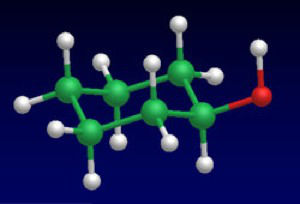
Organic Chemistry Help Podcast by AceOrganicChem.com
[email protected] ([email protected])
Each video organic chemistry session takes one topic and shows you the professor's tricks, a practice problem, virtual whiteboard, and a helpful website. Designed for organic chemistry students of all levels. More can be found at http://www.aceorganicchem.com
- 19 minutes 34 secondsHow to pass organic chemistry (or even get an A): Professor survey results
We surveyed a bunch of organic chemistry professors on how to pass organic chemistry, or even get an A....they told us the best ways to study, the ways to avoid and gave some helpful hints. We go over it all here. Want to get your free gifts? Go to http://www.aceorganicchem.com/free.htm
27 September 2016, 1:48 am - 25 minutes 42 secondsFree Organic Chemistry Course: Episode 1-14 How to Ace Organic Chemistry Mechanisms with EASE
In this episode, we introduce the EASE method, a system for determining the mechanism or prodcut of almost any organic chemistry reaction. What we show you here is an abreviated version of the method. To get the entire two hour course for free, just go to http://www.aceorganicchem.com/free-course.html.
The EASE method has four steps:
1) E is for Electrophile/Nucleophile: label all of your nucleophiles and electrophiles.
2) A is for Acid/Base: Find the acids and bases, label them, and move the proton if it is a strong acid.
3) S is for Sterics: Is there steric hinderance? If so, label it and decide if it influences the reaction.
4) E is for Electron Flow: Once all of the players are labeled, move the electrons from nucleophile to electrophile.
We show you how to impliment the method, who the players are and we go through some practice problems. It is a great tool for all organic chemistry students. Give it a try.
7 November 2014, 2:47 am - 15 minutes 55 secondsOrganic Chemistry Help Episode 1-13: Alpha Alkylations
In this episode, we look at reactions that you can use if you need to alkylate a carbon atom which is alpha to a carbonyl. We talk about beta-di-ketone alkylation, enamines, and tautomers. Also, our first sponsor is Learn More, Study Less Videos. We have a link to their stuff at http:www.aceorganicchem.com/studyless.html
13 February 2013, 3:41 am - 12 minutes 59 secondsGrignard Organometallics: Organic Chemistry Help Episode 1-12
In theis episode we go pretty in-depth into the Grignard reagent. A little lecture followed by five examples on the virtual whiteboard. In our site of the week, we proudly/arrogently talk about the new class notes bank that we created for organic chemistry students. It has over 70 sets of class notes from around the US and allows you to vote on the ones you like. Found at organic chemistry tutorials, we think it is pretty helpful. For more organic chemistry help, please see our main site.
27 January 2013, 3:21 pm - 21 minutes 33 seconds1H NMR: Episode 1-11 of Organic Chemistry Help
In this episode, we review proton NMR and take a trip to a Japanese wesite with lots of spectral data.
16 January 2013, 1:03 am - 12 minutes 54 secondsEAS Tricks: Episode 1-10 of organic chemistry help
In this episode, we go to the virtual whiteboard to discuss the resonance reasons behind o,p and meta selectivity in EAS. Then, we start the presentation and see three different tricks that your professor might try to pull on your final exam and how to get around them. Finally, we get to a pretty fun website that melds comic books and the periodic table. As always, you can find more resources to help you at www.aceorganicchem.com
8 December 2012, 2:43 pm - 13 minutes 43 secondsSN1 reactions: Episode 1-9 of organic chemistry help
In this episode, we examine the SN1 reaction from a couple of different points of view. We also go to the virtual whiteboard to clear up a misconception on the reaction and discover a website with some fun chemistry stuff like organic chemistry tetris. As always, you can find more help at organic chemistry.
3 December 2012, 10:40 pm - 16 minutes 32 secondsSN2 Reaction: Episode 1-8 of Organic Chemistry Help
In this episode, we examine the SN2 reaction. We examine what makes a good substrate, look at some problems on the virtual whiteboard, and hear about a website that has organic chemistry mechanisms.
26 November 2012, 2:19 am - 12 minutes 35 secondsEpoxides: Episode 1-7 of organic chemistry help
In this episode we talk epoxides. We show why some epoxides react differently under different conditions, go to the virtual whiteboard for some practice problems and learn about www.wikipremed.com, a great site for organic chemistry mechanisms.
As always, more organic chemistry help can be found on the web by visiting our homepage. It has testbanks, videos, flashcards, and other helpful items to get you through the course.
18 November 2012, 6:08 pm - 15 minutes 50 secondsE-Z Alkene Nomenclature: Episode 1-6 of Organic Chemistry Help
In today's episode we talk EZ alkene nomenclature. We take it a step further by going into special cases that might look like "a tie", go to the virtual whiteboard to see another example, and find a website from Columbia University that is pretty helpful. More can be found at organic chemistry.
11 November 2012, 6:33 pm - 13 minutes 26 secondsChirality: Episode 1-5 of Organic Chemistry Help
In this episode, we examine a useful method determinig R/S conifgurations, travel to our virtual whiteboard and see an animation to help you visualize how to rotate chiral carbon atoms.
3 November 2012, 2:27 pm - More Episodes? Get the App
Your feedback is valuable to us. Should you encounter any bugs, glitches, lack of functionality or other problems, please email us on [email protected] or join Moon.FM Telegram Group where you can talk directly to the dev team who are happy to answer any queries.
 Organic Chemistry Laboratory Lecture
Organic Chemistry Laboratory Lecture
 Analytical Chemistry Podcast
Analytical Chemistry Podcast
 Organic Chemistry I/II - 2009-2010
Organic Chemistry I/II - 2009-2010
 Chem 2061/2062 - Organic Chemistry I/II videos
Chem 2061/2062 - Organic Chemistry I/II videos
 CHEM 241 Organic Chemistry I
CHEM 241 Organic Chemistry I